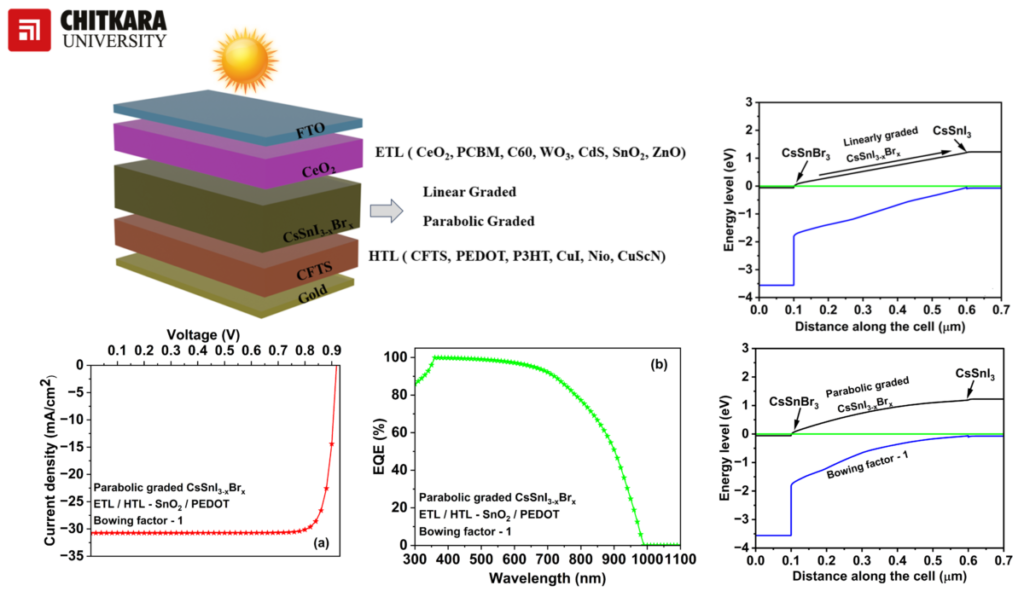Developed through bandgap engineering and material design, the proposed PV device is based on a tin-based perovskite material known as CsSnI3-xBrx. Reportedly, it can be further designed to achieve an energy conversion efficiency of more than 24%.
Researchers from Chiktara University in India claim to have managed to improve the stability and performance of organic-inorganic perovskite solar cells by employing a strategy called bandgap grading.
It consists of allowing the cell’s perovskite absorber to collect a wider range of light photons by changing its thickness and characteristics. “Our study demonstrates the effectiveness of both linear and parabolic bandgap grading strategies in optimizing light absorption and improving performance,” said the study’s lead author, Jaya Madan. pv magazine. “Parabolic sorting appears to be particularly promising.”
The scientists used the SCAPS-1D solar cell capacity software, developed by Ghent University, to simulate the new cell configuration. They assumed that the cell relied on a lead-free, tin-based perovskite material known as CsSnI3-xBrx. “The integration of bandgap tuning leads to modulated bandgap/affinity along the depth of the absorber layer, which increases the efficiency of the solar cell,” they explained.
The cell was initially designed with a substrate made of fluorine-doped tin oxide (FTO), an electron transport layer (ETL) based on cerium oxide (CeO2), the perovskite absorber, a hole transport layer (HTL) made with copper. iron and tin (Cu2FeSnS4), and a gold (Au) metal contact.
For both the ETL and HTL the thickness was assumed to be 100 nm, while for the absorber the academics considered a thickness in the range of 50 nm to 500 MW, with a variable band gap energy between 1.25 eV and 1.78 eV.
The proposed solar cell configuration was tested under standard lighting conditions and achieved an energy conversion efficiency of 23.61% with the parabolic approach and 21.68% with linear gradation. The simulations also showed that by replacing the used ETL and HTL materials with tin oxide (SnO2) and PEDOT:PSS, the cell efficiency can also exceed 24%.
The new solar cell concept was described in the study “Maximizing the photovoltaic performance of all-inorganic perovskite CsSnI3xBrX solar cells through bandgap classification and material design,” published in Solar energy.
“Our research offers a convincing path to realizing high-quality, sustainable and stable perovskite solar cells,” concludes Madan. “The advances in bandgap engineering and material design demonstrated in this study hold promise for accelerating the commercialization of lead-free perovskite photovoltaic technologies.”
This content is copyrighted and may not be reused. If you would like to collaborate with us and reuse some of our content, please contact: editors@pv-magazine.com.

